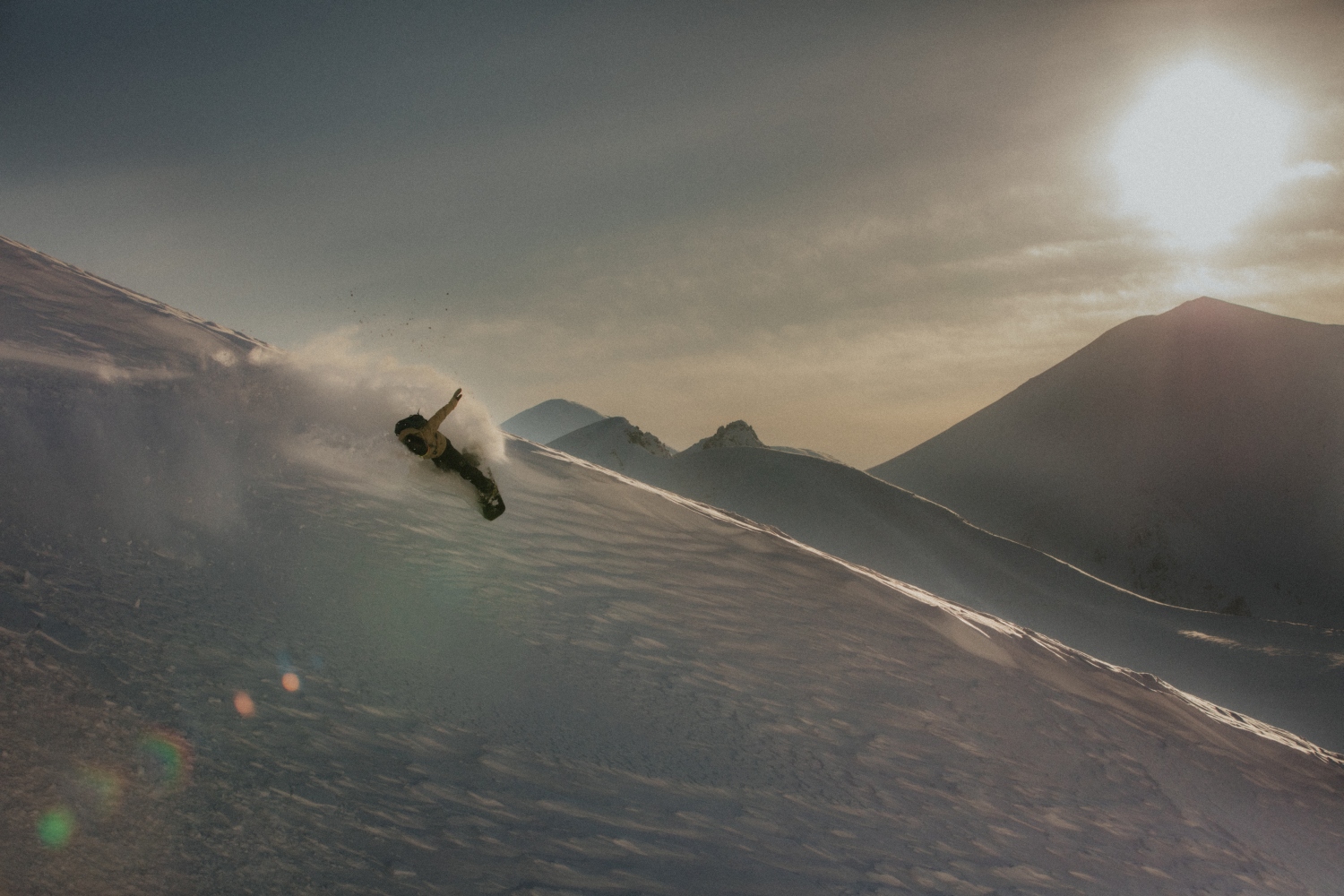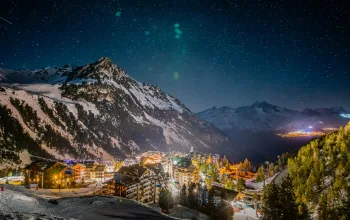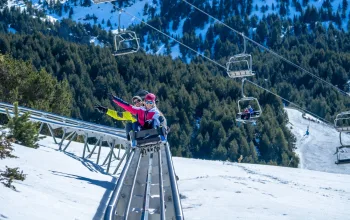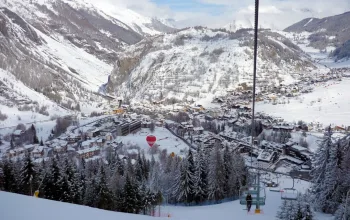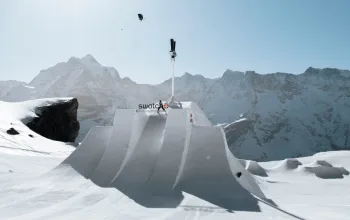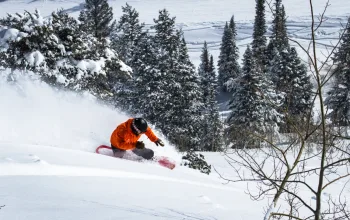It was the last thing I expected as we came in to land at the world’s largest international airport. Fly into certain cities—like Denver, at 1,600m altitude, or Oslo, at 59 degrees north—and snow on the runway would be totally normal. But Istanbul is zero metres above sea level, and sits at roughly the same latitude as Barcelona. If there was snow on the ground here, I thought, what must it be like in our final destination: the mountains of the Anatolian interior? My fellow passengers were fretting about the cold as we peered out the portholes of the plane, but I found it hard not to feel excited.
Turkey is one of the planet’s most popular holiday destinations. It was the fourth most-visited country in the world in 2022, according to the United Nations World Tourism Organisation—after France, Spain, and the USA. The vast majority of the 50 million tourists who visit every year, however, come for the sun. Think Turkey, and you probably think of swimming to secluded beaches, touring ancient temples, or bargaining in bustling bazaars.
Carving through crisp, fresh powder? Not so much. A quick glance at the map, however, shows that there’s no reason why Turkey shouldn’t be a world-class winter sports destination. Mountains, many of them topping out at over 3,000m, cover large parts of central and eastern Anatolia. The country’s tallest peak, Mount Ararat, is 5,137m (making it 300m higher than Mont Blanc) and Turkey is surrounded on three sides by sea, so there’s no shortage of moisture to create snow.
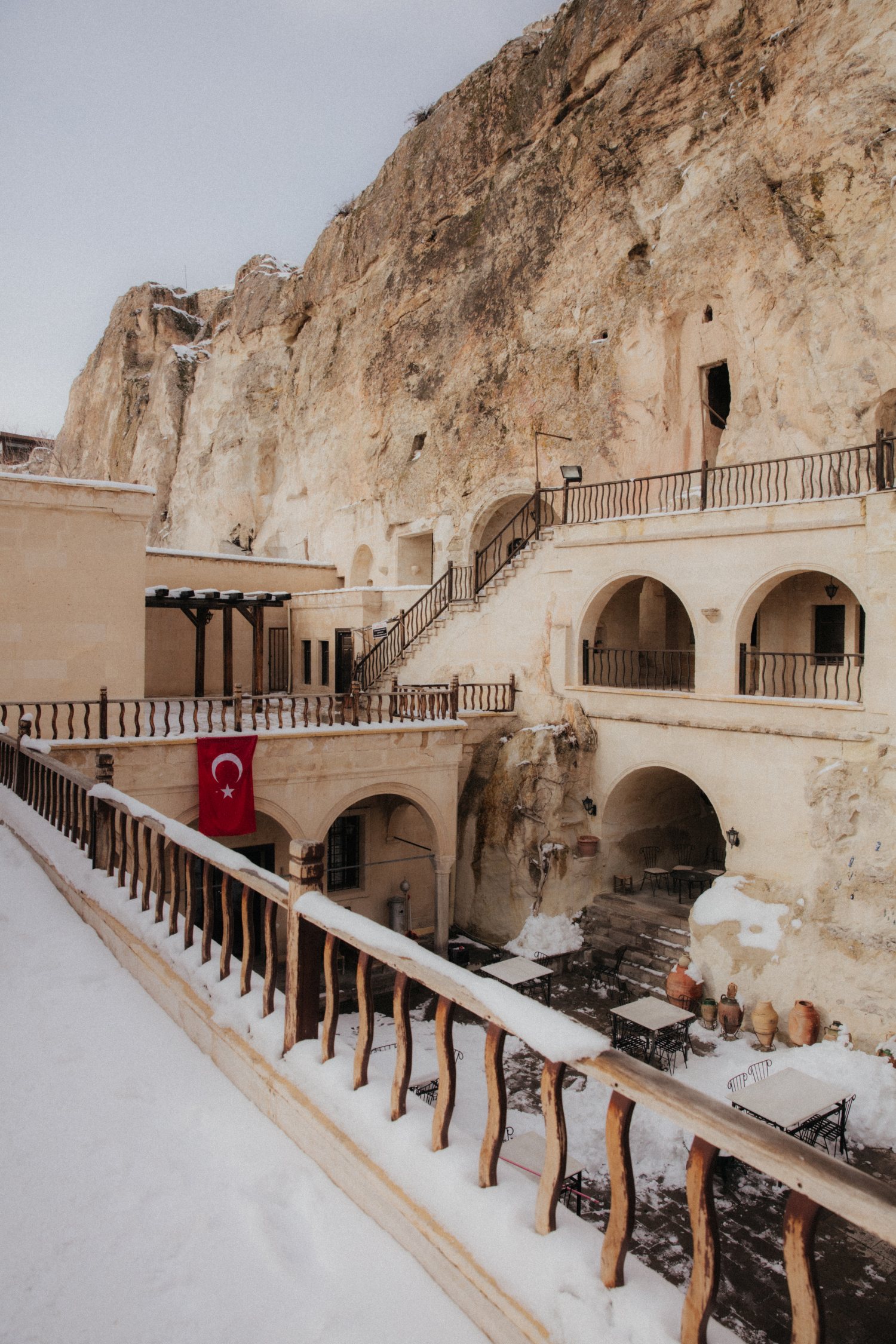
The past two decades in Turkey have been characterised by a construction boom, driven largely by tourism. Recently, this has extended into investment in ski infrastructure, as local businesses and provincial governments seek to spread visitors out over the year. At the same time, dedicated adventure tour operators like Ski Turkish, who organised our trip, have sprung up, hoping to change the perception of the country as solely a summer destination.
A few days before we arrived, however, disaster struck. At 4.17am on February 6th, a massive earthquake shook the southeastern provinces of Gaziantep, Kilis, and Hatay, near the Turkish-Syrian border. Thousands of buildings collapsed, many of with families still sleeping inside. In the aftermath, it emerged that corrupt construction companies had cut corners on safety measures, leading to a death toll that was far higher than it should have been. All told, more than 50,000 people lost their lives.
Although we weren’t scheduled to go anywhere near the earthquake zone, our first instinct on hearing the news was to assume the trip would be cancelled. But after a conversation with Erdem Kurt of Ski Turkish, photographer Dan Medhurst and I started to see things differently. Lots of people had cancelled bookings, Erdem said. Locals were worried about friends and family caught up in the quake, while international tourists had been put off by round-the-clock coverage of the disaster. And yet, as Erdem pointed out, tourists staying away wouldn’t speed up the country’s recovery. The ski towns and resorts he worked with still needed the business. “I’ve talked with our partners, and they all want the trip to go ahead,” he said. “Please come.”
“People have been skiing in Turkey for almost a century, since the time of Atatürk”
Past glories, future plans
People have been skiing in Turkey for almost a century. The first pairs of skis were imported from Sweden in the 1920s by the newly-formed republican government—primarily for the army, but also to distribute to halkevleri, or “houses of the people,” across the country. Established by Atatürk (the father of the Turkish Republic who’s still revered today) these were cultural centres which aimed to help the country modernise by offering young people free courses in literature, art, music, and sports. By 1936, skiing was developed enough for Turkey to field a team for the Winter Olympics in Garmisch. Only one of the athletes, Mahmut Karman from Trabzon, managed to complete a full event, finishing 72nd out of 72 in the cross country. But given the resources at their disposal, just being there was an achievement in itself. After this promising start, however, skiing in Turkey developed slowly.
By the late 90s, the handful of resorts which existed were small scale affairs, with lifts used mostly by weekend sightseers—about as likely to compete with the likes of Val d’Isère or Vail as Mahmut Karman was with the great French or US skiers of his day. Middle-class Turks might learn to ski at home, but those with means would still head to Europe for their holidays. All of that, however, has changed over the past few years.
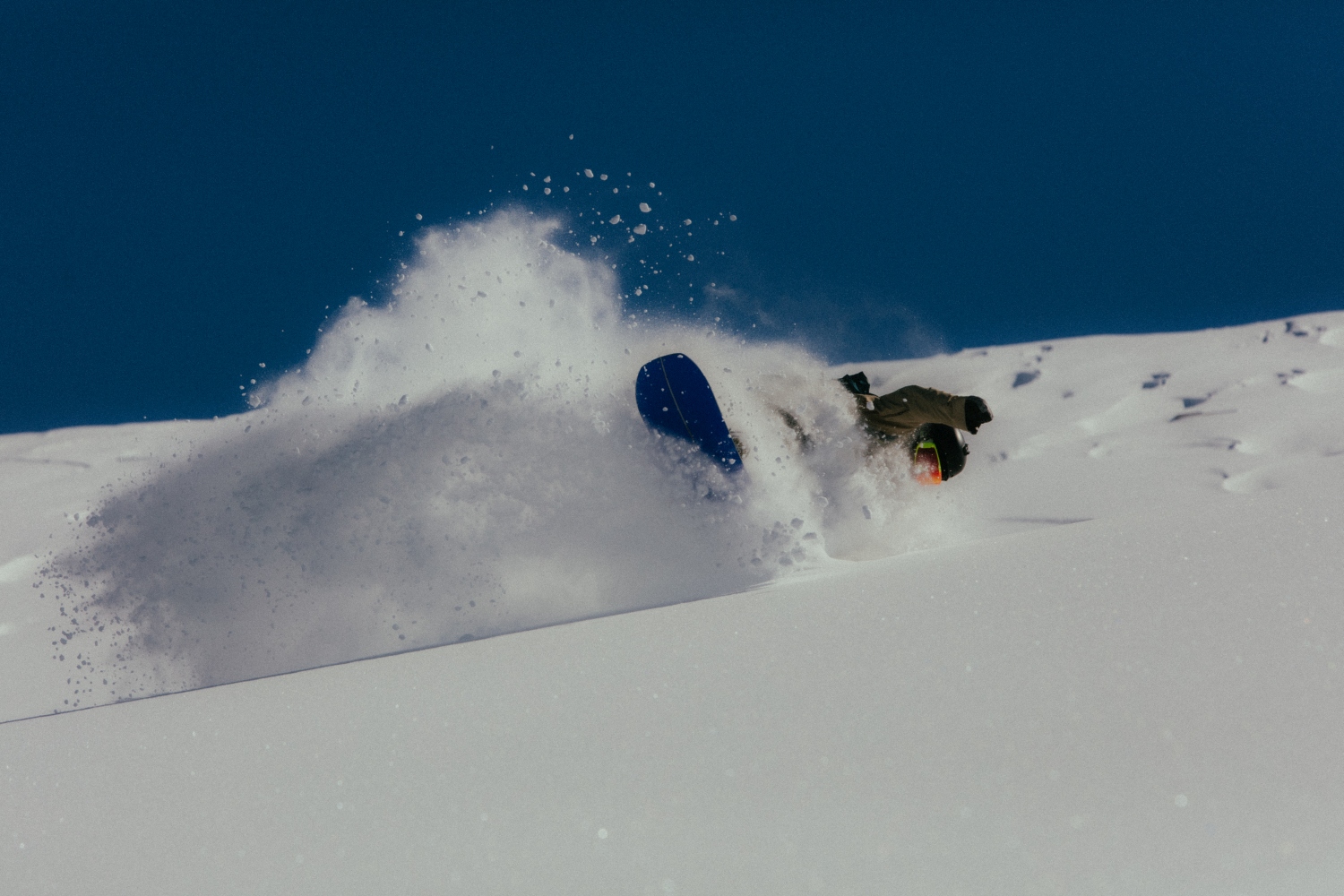
“I would say it really started to pick up around 2000,” said Mert Okyay, as we shared a chairlift in Erciyes, the first resort on our Ski Turkish itinerary. We’d met Mert, a keen telemark skier who used to live in Norway, when he’d started chatting to our friend Chris Eskamp, a fellow freeheel evangelist, in our hotel lobby. Now a successful property developer in Istanbul, Mert had found himself with some downtime during the pandemic, and set out to try and visit every ski field in Turkey.
This made him uniquely qualified to talk about the country’s resort-building boom. “Travel across the country and you’ll see there’s lots of obscure places, and lots of failed projects that were left half-built. But also,” he said, gesturing to the lifts and pistes beneath us, “there are places like this.”
“We had acres of terrain to play on, all of it blanketed by a two-day storm”
Mount Erciyes Ski Resort is nothing if not impressive. Built on three sides of an 3,917m-high extinct volcano—complete with a dramatic crater beneath the summit—it has 150km of pistes, served by 12, ultra-modern, Austrian-made lifts. The highest of these, which tops out at 3,400m (higher than the top station in Val Thorens) remained closed the day we skied there.
But there were still acres of easily-accessible terrain to play on—all of it blanketed by the same two-day storm which had covered Istanbul airport when we arrived. Mert and Chris led the charge, disappearing into the light, fluffy powder as they crouched deep into their telemark turns. Chris’ partner Wendy Skene followed, with quick carves of her own, before Erdem, Dan and I charged through the middle, messing up their neat powder eights on our snowboards. “Can you believe we’re riding in Turkey?” said Dan, a huge grin plastered across his face.

Later that afternoon, Erciyes’ CEO, Dr Murat Cahid Cingi, explained how this unlikely winter playground had come into being. “Kayseri, the local municipality, has invested €200 million since we started in 2005”. The whole resort was publicly funded, he told us, and he himself is a local government employee. Erciyes’ stated aim is to attract tourists during what was previously the dead season: winter. To that end, its lifts and pistes are specifically designed to help people learn to ski. “Our main target is to convert ‘normal’ visitors, who might come to see snowy mountains for a couple of hours, into skiers, who will stay for a few days,” said Dr Murat. In his enthusiasm, I could hear echoes of Atatürk, whose portrait hung on his office wall.
Once again, the government was betting on skiing as a force for future good, and the bet seemed to be paying off. “This project has already produced around €100 million for the local economy in winter,” Dr Murat said. While 80 percent of visitors to Erciyes are Turkish, more and more foreigners have started arriving in recent years, he said—their numbers no doubt boosted by the fact that lift tickets have been capped at local-friendly prices. It cost a mere €13 for a full day pass when we visited (compared to €72 for the Three Valleys). “They come because we offer European standard slopes at affordable prices,” Dr Murat said, proudly. “Plus of course, Turkish food is famous all over the world.”
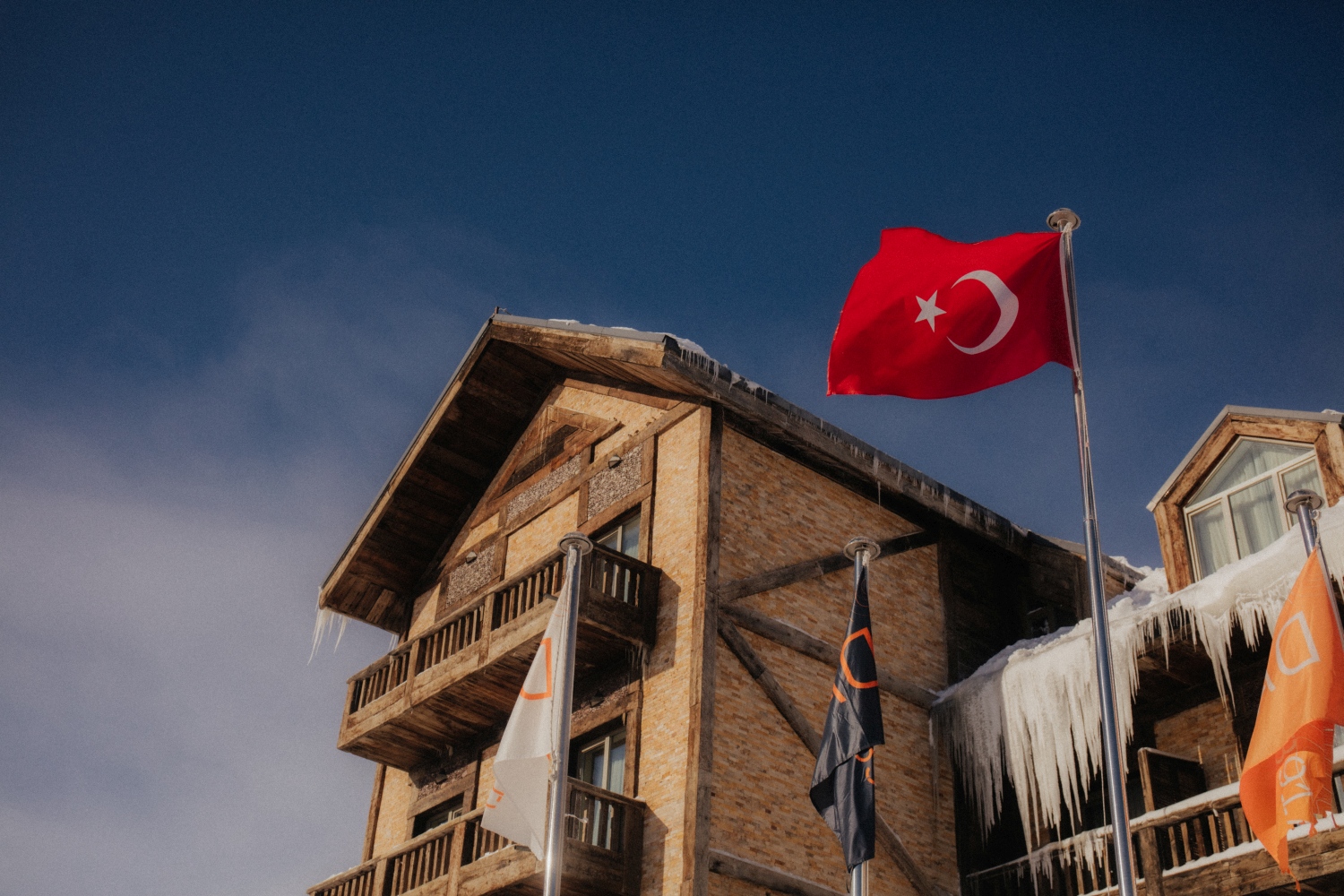
Cold climate, warm welcome
“Welcome welcome,” said Erdem, translating the Turkish poem painted on the wall of the restaurant, “of course you will eat kebab / if you have any problem in life / kebab is the solution for you.” As our table collapsed in laughter, the waiter arrived, carrying another round of cağ kebapi (skewers thick with doner-like meat) and delicious salads. We ate spectacularly everywhere in Turkey—from the buffet at the four-star Das 3917 Hotel, to the truckstop café on the road to Kayseri—but the Koç Cağ Kebap restaurant in Erzurum still managed to stand out. The pictures of Turkish celebrities enjoying their hospitality undoubtedly helped, as did framed photo of the “under-12 kebab eating champion” on the wall. But mostly, it was the food itself: simple, unpretentious, made from the tastiest of ingredients, and—especially for those of us used to European ski holiday prices—ludicrously cheap.
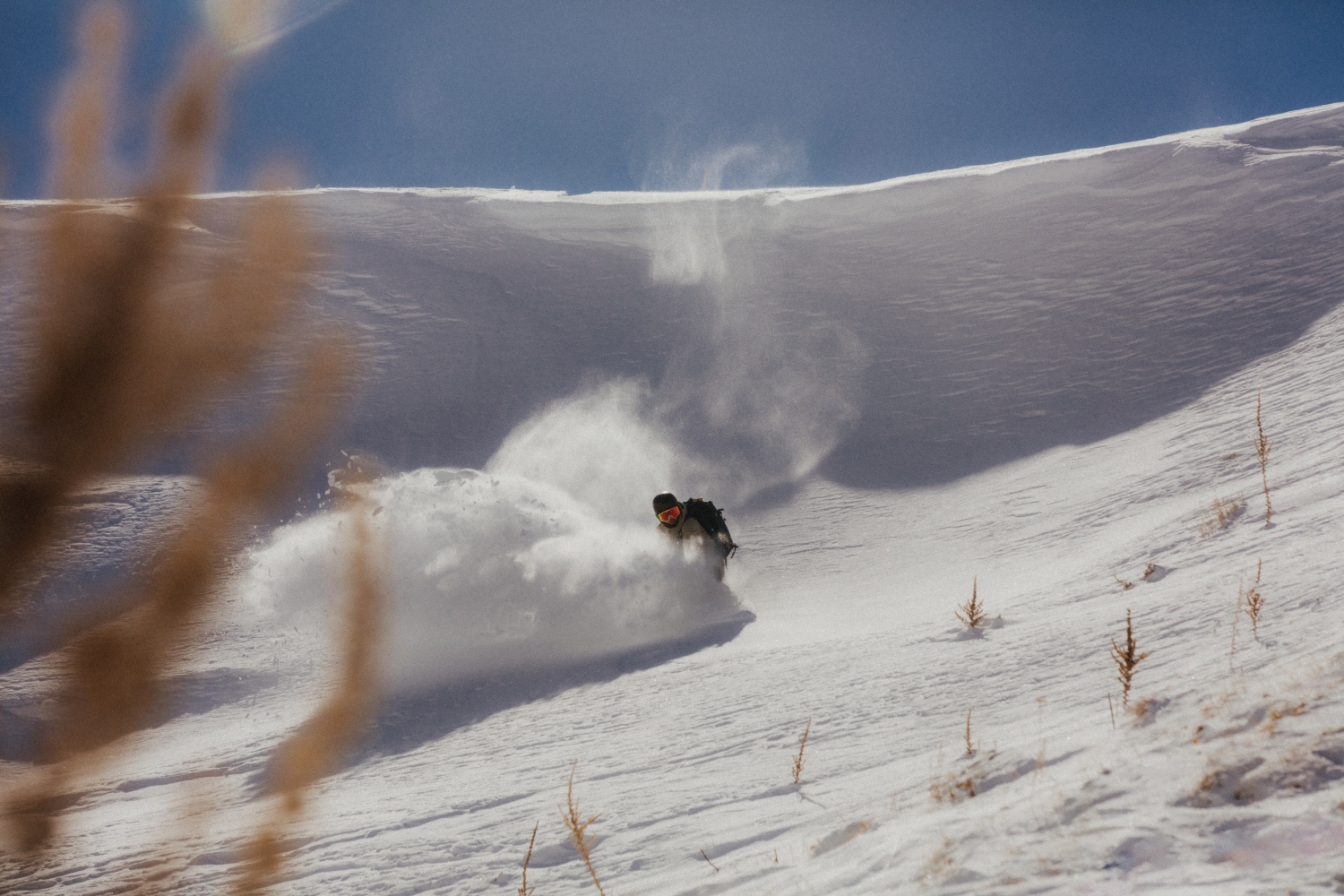
If Turkey has a winter sports capital—an answer to Salt Lake City, Innsbruck, or Grenoble—then Erzurum is it. Located in the far east of the country it’s a city of 400,000 people which sits at 1,950m, and the snow-capped peaks to its south are home to several ski resorts. We only had time to explore one, Ejder 3200, and (as in Ericyes) the top lift was shut when we rode there. But the terrain was impressive, and its potential was obvious.
“We can’t open the top lift because lots of our ski patrollers have volunteered to go to the earthquake zone to help,” explained Kıvanç Karapinar, from the local tourist board. The city had also opened up 20,000 hotel beds for internally displaced people who’d lost their homes, he said. While no buildings had collapsed in Erzurum itself, the impact of the disaster was still visible everywhere. Flags—ubiquitous in Turkey—fluttered at half mast. Outside a mosque, a large crowd had gathered to pray for servicemen killed in rescue efforts. Yet, for all the sadness, the streets were still busy. Just one block away from the funeral, a wedding was taking place. As Dan politely asked the couple if he could take their photo, I pointed out the juxtaposition to Erdem. “But of course Tristan. In Istanbul the bars are open again now. Life goes on, you know?”
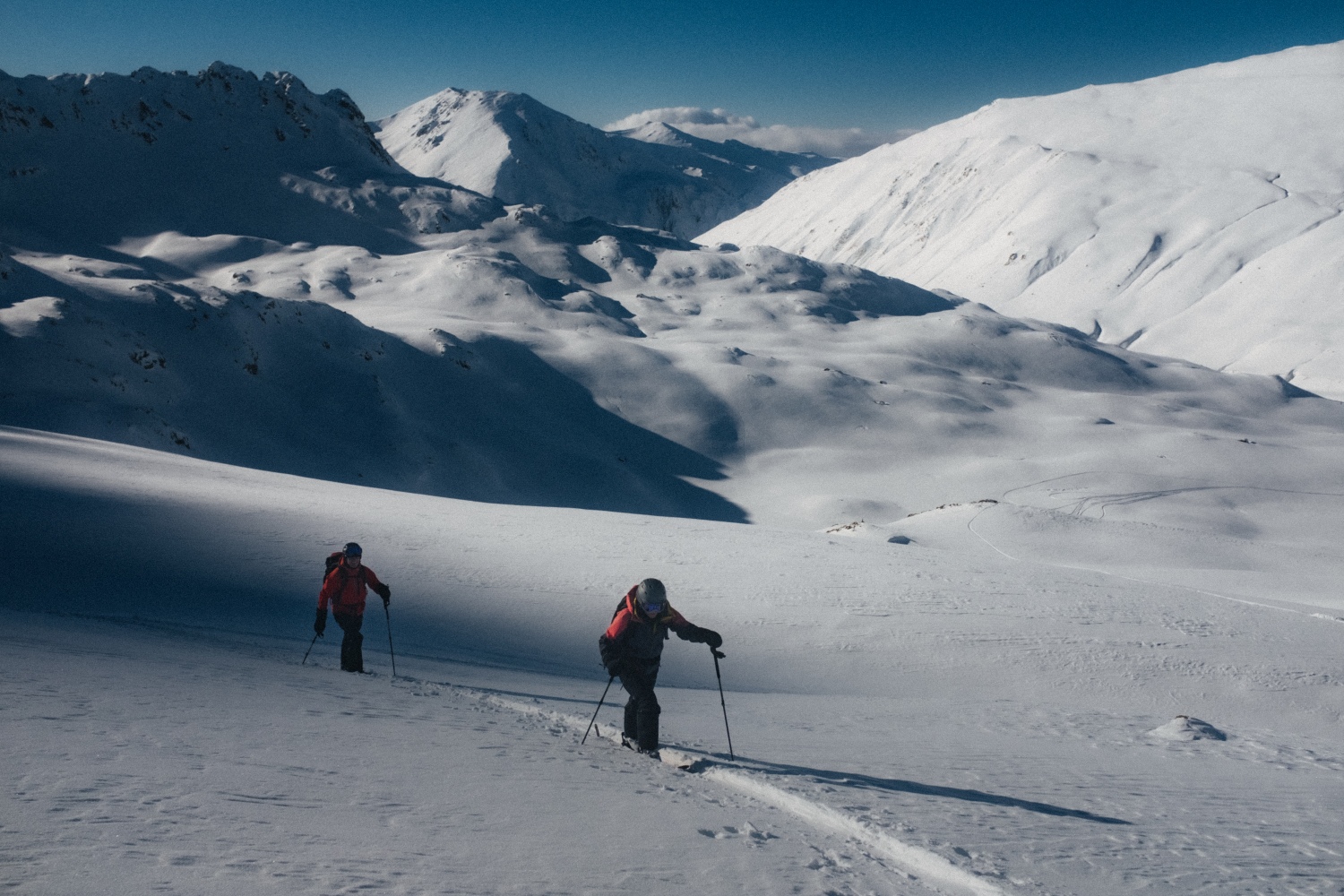
Simple pleasures, unexpected surprises
“Honestly, no-one knows where he came from, because there is nothing around here,” said Lasha Kvekveskiri, the head mountain guide at the Ovit Backcountry Lodge. He was telling the story of the lodge’s old English sheepdog, also called Ovit, who randomly turned up one winter’s morning. “We fed him, and then he disappeared again for two days. When he came back, he brought Bob with him. Like he knew this was a place they would be looked after and he wanted to bring his friend.”
The dogs were not wrong. The lodge, 2,640m up in the remote Kaçkar Mountains, was a welcoming island of light and warmth on the night we arrived—and the only place open for miles around. In summer, Lasha said, a major highway ran right past the front door, but getting there in winter meant a half-hour snowmobile ride in the dark, through drifts so deep that the road signs were almost completely buried. When the sun rose the following morning, it was instantly obvious why the lodge’s owners had chosen this spot. We were surrounded by a 360-degree panorama of 3,000m-high peaks, offering every kind of terrain imaginable—and all of it blanketed in deep, fresh snow.
Access to this backcountry paradise was provided by two snowmobiles, which made shuttle runs up the lower slopes, before we skinned up the final steeps. As we reached the top of the ridge on our first morning, Lasha pointed north. “See where it looks flat in the distance there? That’s mist over the Black Sea.” Between us and the distant shoreline, there were range after range of pinched-meringue mountains, with not a single track visible on any of them.
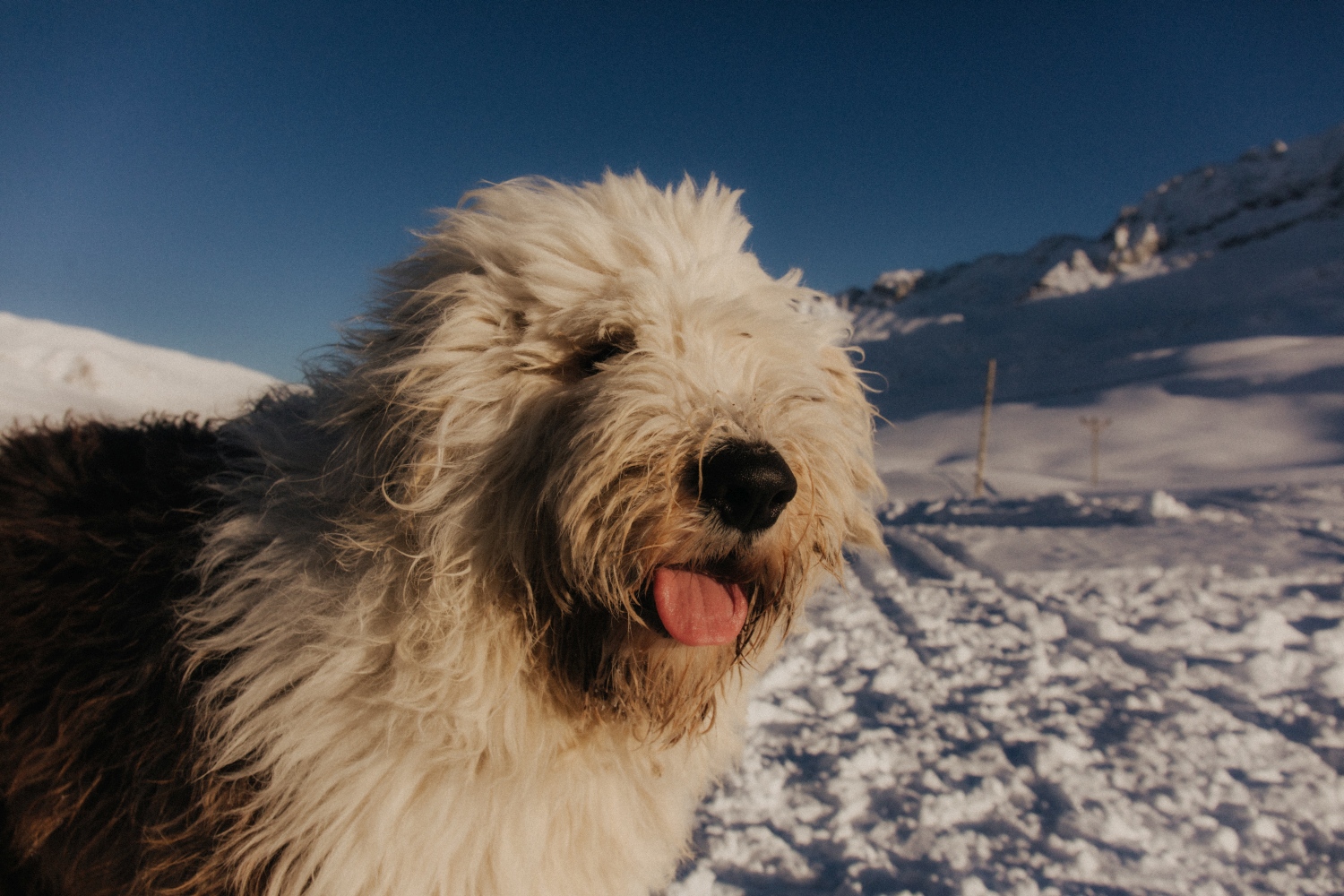
Back at the lodge, the service was as good as the skiing. Our host Talip Kurt mixed up a mean aprés-ski negroni, while chef Sezgin Ozsepet served a continuous stream of delicious food: shakshuka and thick, Turkish coffee for breakfast, fresh salads and soup for lunch, and three-course dinner each evening. In the evenings, we read, watched ski films on the pull-down cinema screen, or repaired dings in our bases in the fully-equipped waxing room. Among the fat skis and powder boards stacked against the walls—available for guests to borrow as they liked—there were a couple of strange wooden curiosities.
Roughly 180cm long and 40cm wide, they were little more than planks nailed together, with a rope on the nose—a bit like Sherman Poppen’s original 1960s Snurfer, the ancestor of today’s snowboards. Each board had the word “Petran” branded into its wooden base.
“Petran is the old name for a town near here, by the Black Sea,” explained Erdem. “They have records of sliding down the hill on these kinds of boards for about 400 years.” Fascinated by the idea that this Turkish tradition predated Poppen by several hundred years, I decided to leave my 21st-century splitboard in the lodge for the final morning of our trip. It wasn’t easy to get going at first. The cow fat rubbed into the planks of Petran boards is no substitute for freshly-waxed p-tex, and without bindings, it took time to work out the placement of my feet.
Eventually, however, I managed to steer inelegantly down a 400m stretch of gentle hillside, before collapsing in a heap of giggles. “That’s so fun,” I shouted to Erdem. Safe to say, learning a new snowsport on an ancient local board had not been on my bingo card when we started our trip. But if spending ten days in Turkey taught me anything, it’s that the country is full of unexpected surprises.
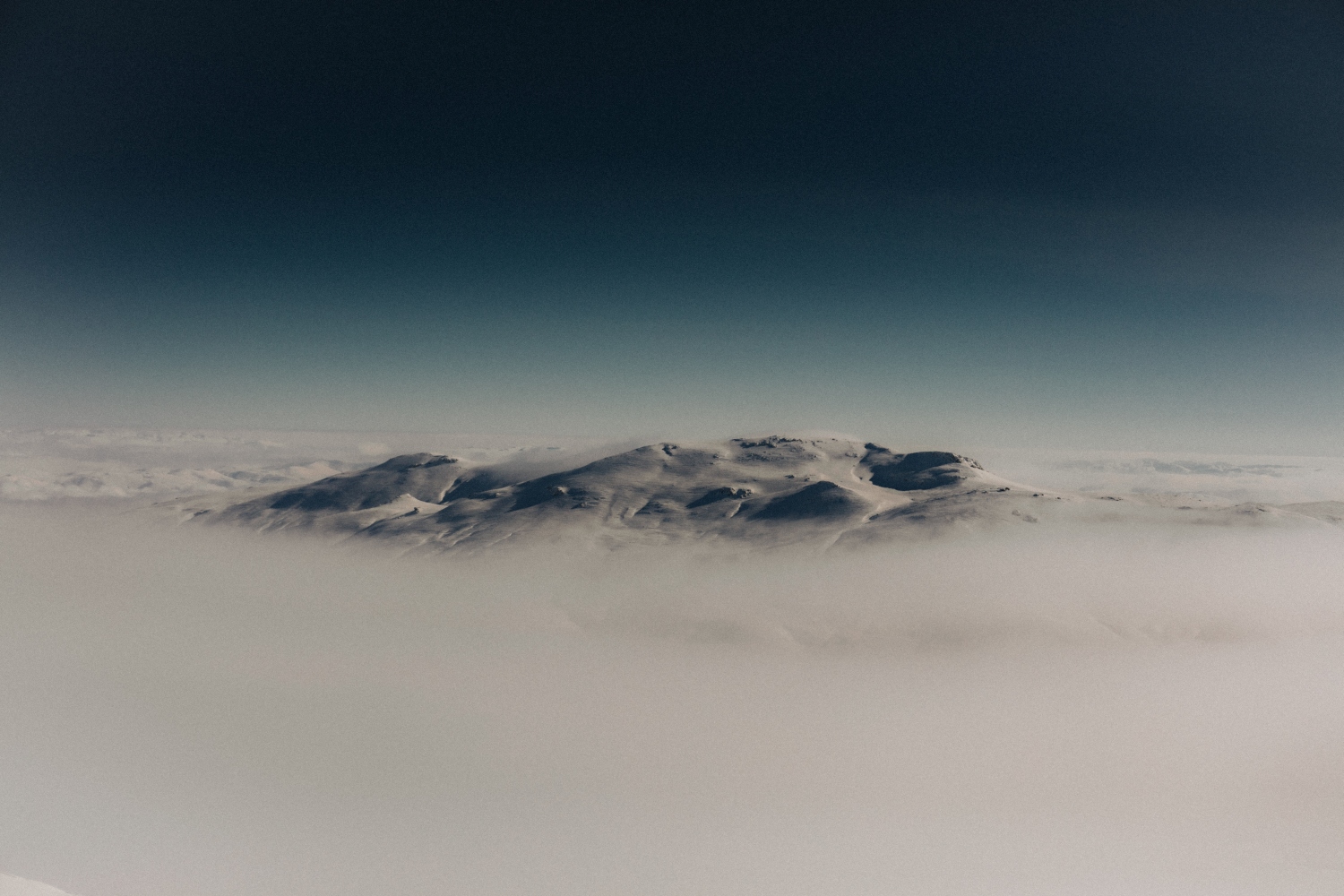
Snow How
Our trip
Tristan was hosted by the Turkish tourist board and Ski Turkish, who can organise custom tours, and holidays for skiers of all levels.
Getting there
Turkish Airlines fly from five UK cities to Istanbul, and operate internal connections to Kayseri (for Erciyes), Erzurum, and Rize, near the Ovit Backcountry Lodge.
Where to stay
In Erciyes, we stayed in the brand new, 4-star Das 3917 Hotel. In Erzurum, we stayed in the Snowdora Hotel Palandöken, and we spent three nights at the Ovit 2640 Hotel.



